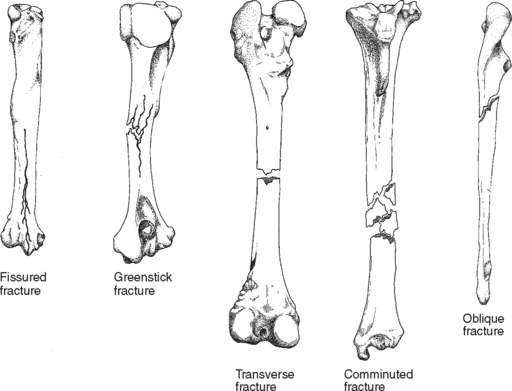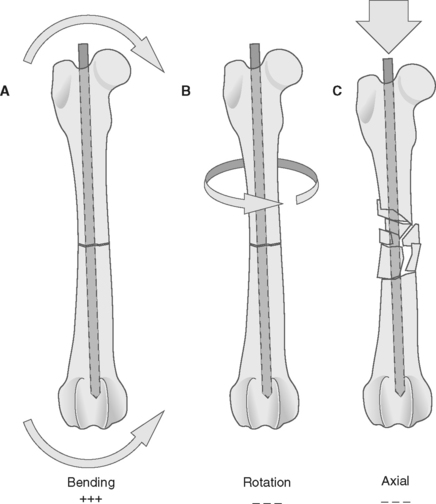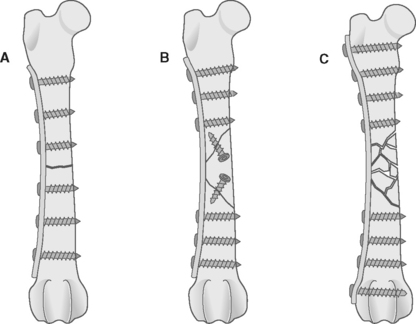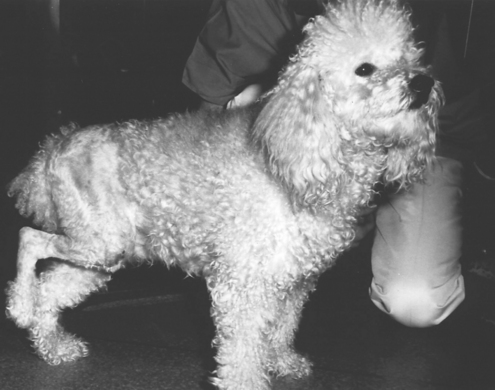Chapter 7 Diseases of the Musculoskeletal System
The musculoskeletal system is responsible for movement and shape in all animals. Animals must be able to move, find food, seek shelter, and escape predators to survive. Without a rigid frame (the skeleton), flexible articulations (joints), and a system of pulleys (muscles, tendons, and ligaments), animals would be little more than lumps of tissue. The integration of these systems provides movement, one of the basic characteristics of life.
Disruption of the musculoskeletal system can occur as a result of the following:
LONG-BONE FRACTURES
At least three-fourths of long-bone fractures occur as a result of motor vehicle accidents. Other causes include indirect violence, bone disease, or repeated stress. These fractures may be classified as open (bone exposed through the skin) or closed (bone not exposed through the skin), simple or comminuted (splintered or fragmented), and stable or unstable (Fig. 7-1). The type of fracture and its location determine the best method of repair.

Figure 7-1 Common traumatic fractures.
(From Christenson DE: Veterinary medical terminology, Philadelphia, 1997, WB Saunders, by permission.)
The job of the veterinary technician is to quickly assess the patient, especially in the case of motor vehicle accidents. After treatment for shock, hemorrhage, and soft-tissue trauma, the possibility of fractures should be addressed. Technicians should always be aware that fractures might exist. They should take care when moving the animal, protect any areas of suspected fractures with support bandages (such as a Robert Jones) if possible, and be careful not to make the injury worse by restraint methods or handling when obtaining radiographs.
TREATMENT
Methods of fixation
INFORMATION FOR CLIENTS
CRUCIATE LIGAMENT INJURY
The anterior and posterior cruciate ligaments are intraarticular structures that help stabilize the stifle joint. Rupture of the cranial cruciate ligament is possibly the most common injury to the stifle of the dog and is a major cause of DJD in the stifle joint (Fig. 7-4). The ligament may rupture completely, resulting in gross instability of the joint, or it may tear, producing minor instability. Both injuries result in degenerative changes within the joint within a few weeks.
Cruciate ligament injuries are usually seen in middle-age, obese, inactive animals that suddenly hyperextend their stifle joint while exercising. Rupture may also occur in animals engaged in athletic endeavors (such as racing or jumping), resulting in a traumatic injury to the ligament. There may be an occult degenerative process present in the former group of animals that predisposes the ligament to atraumatic rupture. In both groups, rupture of the opposite cruciate ligament often occurs within a year after injury to the first ligament. Approximately 50% of dogs with ligament rupture also demonstrate meniscal injury.






